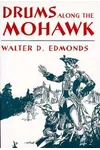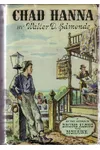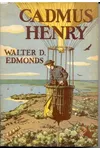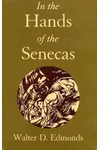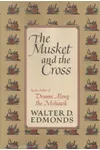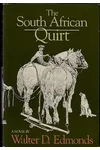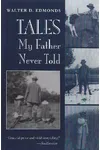Picture an American storyteller who spun the raw grit and heart of the Revolutionary War into a timeless tale—meet Walter D. Edmonds! Known for his vivid historical fiction, Edmonds brought upstate New York’s past to life, most famously through his bestselling novel, Drums Along the Mohawk. With a knack for blending meticulous research with relatable characters, he crafted stories that pulse with adventure and humanity, earning him a National Book Award and a lasting place in literary history.
Born in the rugged landscapes of New York, Edmonds didn’t just write history—he lived it through his words, capturing the struggles of ordinary folks in extraordinary times. Let’s dive into the life and legacy of this master of historical fiction!
The Making of Walter D. Edmonds
Walter 'Wat' Dumaux Edmonds was born on July 15, 1903, in Boonville, New York, near the Black River. Raised in a region steeped in history, he developed a deep love for the Mohawk Valley and Erie Canal, places that would later star in his novels. Initially set on studying chemical engineering at Harvard, Edmonds found his true calling in writing, editing The Harvard Advocate and studying under literary mentor Charles Townsend Copeland. By 1929, fresh out of college, he published his first novel, Rome Haul, a tale of life on the Erie Canal, kicking off a prolific career.
Walter D. Edmonds’s Unforgettable Stories
Edmonds’s novels are like time machines, whisking readers to the frontier of colonial America. His 1936 masterpiece, Drums Along the Mohawk, follows newlyweds Gilbert and Lana Martin as they navigate love, loss, and guerrilla warfare in the Mohawk Valley during the Revolutionary War. A bestseller for two years—second only to Gone With the Wind—it was adapted into a 1939 John Ford film starring Henry Fonda. Critics praised its gritty realism and rich historical detail, drawn from Edmonds’s deep dives into diaries and militia rolls.
Beyond Drums, Edmonds penned over 30 books, many for children. The Matchlock Gun (1941), a tense tale of a boy defending his colonial home, won the Newbery Medal. In 1976, Bert Breen’s Barn earned the National Book Award for Young People’s Literature, showcasing his ability to craft coming-of-age stories with universal appeal. His 1947 novel, In the Hands of the Senecas, explored the psychological depth of women captives in 1778, blending history with human drama. Edmonds’s style—authentic, character-driven, and rooted in the everyday struggles of ordinary people—set him apart as a literary bridge between James Fenimore Cooper and modern historical fiction.
His stories weren’t just about battles; they captured the heart of survival, community, and resilience. Whether depicting farmers facing Iroquois raids or canal workers chasing dreams, Edmonds made history feel personal and alive.
Why Walter D. Edmonds Matters
Walter D. Edmonds didn’t just write novels; he preserved the soul of upstate New York’s past. His works remain a touchstone for historical fiction, inspiring writers and readers to see history through the eyes of everyday heroes. By focusing on ordinary lives—farmers, children, and settlers—he gave voice to the unsung, making the American Revolution relatable across generations. His books, still celebrated in places like the Mohawk Valley where locals reenact scenes from Drums Along the Mohawk, keep the region’s legacy vibrant.
Edmonds’s influence extends to education, with his children’s books introducing young readers to history’s complexities. His awards, including the Lewis Carroll Shelf Award, underscore his ability to captivate all ages. Even today, his novels offer a thrilling escape into America’s formative years.
- Born: July 15, 1903, Boonville, New York
- Key Works: Drums Along the Mohawk, The Matchlock Gun, Bert Breen’s Barn
- Awards: Newbery Medal (1942), National Book Award (1976), Lewis Carroll Shelf Award (1960)
Ready to step into the wilds of revolutionary America? Snag Drums Along the Mohawk and dive into Walter D. Edmonds’s thrilling historical fiction!
